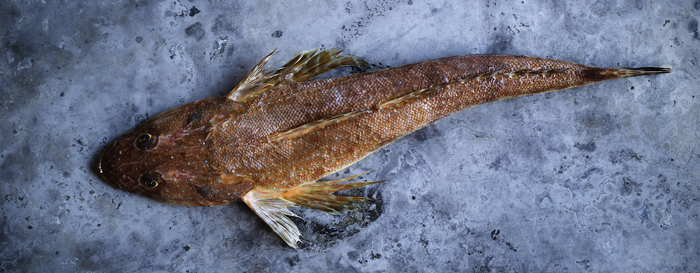Even when data is limited, the right techniques can help determine the sustainability of fish stocks
 Bluespotted Flathead is classified as undefined in the Status of Australian Fish Stocks (SAFS) reports.
Bluespotted Flathead is classified as undefined in the Status of Australian Fish Stocks (SAFS) reports.Photo: William Meppen
By Catherine Norwood
As researchers prepare for the update of the 2018 Status of Australian Fish Stocks (SAFS) reports in December, CSIRO fisheries scientist Malcolm Haddon has been training researchers to use new assessment techniques that may help reduce the number of ‘undefined’ species and stocks in the reports.
In 2016, almost 90 per cent (annually by both value and volume) of Australia’s commercially harvested fish were accounted for in the 83 species in the SAFS reports, which is coordinated and published by the FRDC. These 83 species make up 294 stocks or discrete fish populations, 75 per cent of which were characterised as ‘sustainable’. This represented 85 per cent of the total commercial harvest reported on in SAFS. However, 12 biological stocks, or 14.5 per cent, were ‘undefined’. The aim is to reduce the number of species categorised as ‘undefined’ in the next edition of the reports. Set to be released in December 2018, there will be 37 new species added, bringing the total to 120 species.
Malcolm Haddon says most of the main commercial species, which have quotas and formal assessment and management processes, have already been included in the SAFS reports.
Species that are being added are most likely to be non-target species that may be a byproduct of the targeted catch or may be part of more sporadically harvested fisheries or species.
This will make informative fisheries data more difficult to come by and increase the likelihood of an ‘undefined’ status. However, analysis techniques specifically designed for fisheries with data limitations offer ways to use what can be scant information to produce a defined resource status.
“In Australia we haven’t really tried to do assessments for fisheries with data limitations before, or if we have, we’ve come up with a ‘trigger’ catch that was assumed to be sustainable, and extra work would be needed to increase it. So this is a different process,” he says.
As part of efforts to reduce the ‘undefined’ entries, he led seven FRDC-funded training workshops, held in the Northern Territory, New South Wales, Tasmania, Victoria, South Australia, Western Australia and Queensland earlier this year.
Software he developed was provided with worked examples of real fisheries data as part of the training and participants brought their own state-based data for analysis using different techniques demonstrated during the workshops (see breakout).
Assessing status
Preliminary results during the workshops yielded several successes in terms of determining status. However, these findings will need to be verified through a process of ‘sensitivity’ testing, to see how the results change when the assumptions underpinning the analyses are changed. There will also be a peer review of the process and status, which is a crucial part of the SAFS science quality control procedures.Malcolm Haddon says the workshops also showed that some stocks were not able to be assessed; there simply was not enough useable information. “But now the analysts can defend their decision – why they have elected to call something undefined.”
The workshops raised issues such as what constitutes a ‘negligible’ fishery – when catches by all fisheries are so low as to be considered negligible, and that inadequate information exists upon which to base a status classification – and what the minimum assessable stock is, or the minimum amount of data needed to assess a stock.
“For example, a 50-tonne fishery might sound quite significant, but spread across 2000 kilometres of coast it’s actually a tiny amount. And it could be made up of very few records,” Malcolm Haddon says.
“Despite this, if we have some data, we may still be able to come up with management advice and status for a species. And maintaining the productivity of our fish stocks is an important focus of the SAFS reports.”
Data-poor analysis techniques
Some of the techniques explored in the workshop, along with the kind of data they use, included:
- Catch–maximum sustainable yield (MSY)
This requires data on a series of catches over time but assumes that low catches are a result of reduced population size. When other factors such as management change, changes in fishing behaviour or fishing for other species may occur. - Surplus production modelling
This requires data from a series of catches over time and an index of relative abundance (estimated volume of fish), which is often estimated using catch per unit effort (CPUE) in Australia. - Age-structured production models
This requires a series of catches over time, CPUE (or another index of relative abundance), and additional biological information such as estimates of natural mortality, age at maturity and length and weight at age. - simpleSA (simple stock assessment) and CEDE (catch effort and data exploration)
These use open-source software packages developed for data-poor fisheries. The packages, which integrate the previously described techniques, were demonstrated during the workshops.
Malcolm Haddon says simpleSA provided the basis for most of the analysis participants undertook, with the ongoing development of the software as the workshops progressed. It allows researchers to move from one analysis technique to another as more detail becomes available – from catch volumes, to catch rates, to the biological details of the species and the catch itself.
FRDC Research Code: 2017-102
More information
Malcolm Haddon, 03 6232 5097, malcolm.haddon@csiro.au





